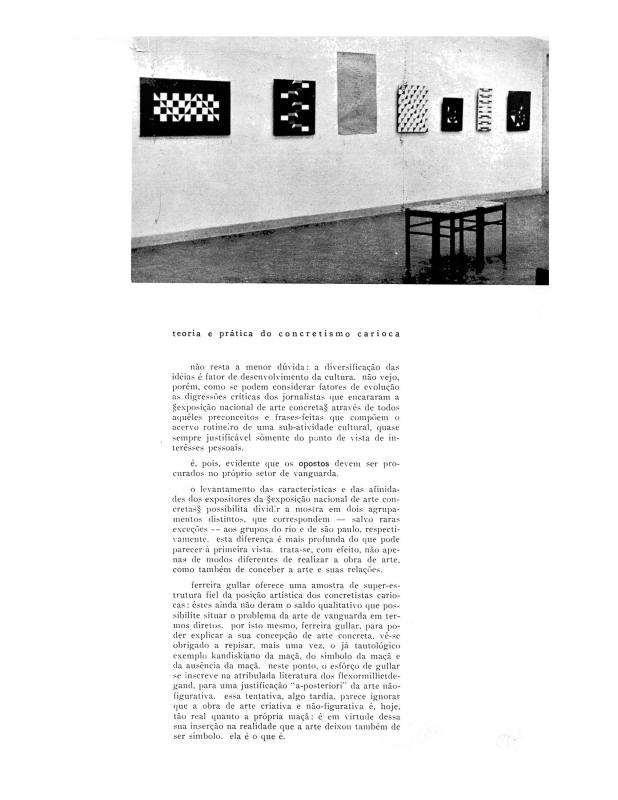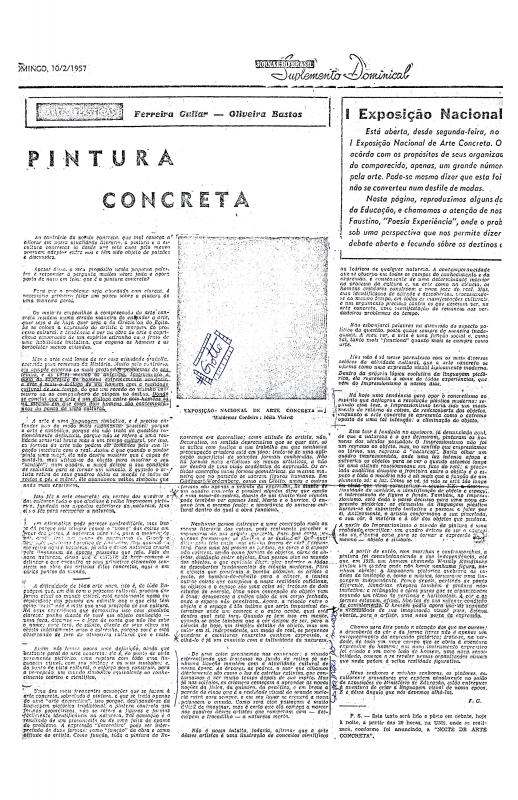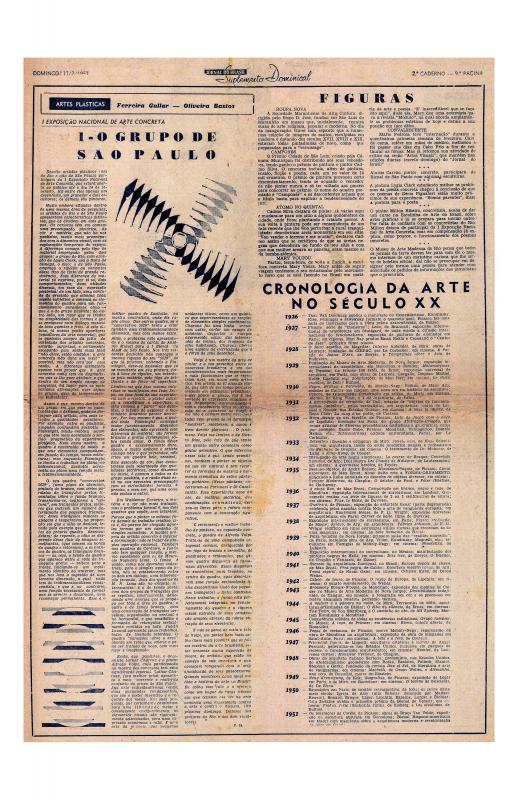A & D (Arquitetura & Decoração) magazine specialized in architecture, though it also covered artistic production, specifically in the fields of visual arts, literature, and dance. This issue, that published “O objeto”—A & D (São Paulo) # 20 (November-December 1956)—featured the work of the artists who participated in the I Exposição Nacional de Arte Concreta that was held at the Museu de Arte Moderna in São Paulo (December 1956), and at the Ministério da Educação e da Saúde in Rio de Janeiro (January-February 1957). For the first time in Brazil, this exhibition gathered together the works of visual artists and concrete artists from São Paulo and Rio de Janeiro, revealing the differences in approach from one group or trend to another.
The cover of the 20th issue of A & D magazine featured a work by the concrete artist from São Paulo Hermelindo Fiaminghi (1920?2004); his piece Triângulos com movimento em diagonal (1956) is an example of Cordeiro’s kinetic idea of creating a sense of movement.
The combative painter, designer, landscape painter, and art critic Waldemar Cordeiro (1925–73) was born in Rome but settled in Brazil shortly after the Second World War. In the late 1940s he began to publish his theories in national newspapers. This document is representative of the sort of ideas Cordeiro was advocating—during that period of profound disagreement concerning the visual arts in Brazil—based on the “concrete aspect” of art in terms of its potential for self-reference and the concept of art as a real, totally autonomous object. This prompted discussions of all kinds with contemporary artists and critics, in particular with the poet, journalist, and art critic [José Ribamar] Ferreira Gullar (b. 1930), who endorsed the subjectivity of art, outlining theories that would subsequently lead to the neo-concrete movement in Rio de Janeiro.
For more on this subject, see by Mário Pedrosa, “Cariocas e paulistas”, Jornal do Brasil, Rio de Janeiro, February 19, 1957; by Waldemar Cordeiro, “Ainda o abstracionismo”, Revista dos Novíssimos (São Paulo, 1949) [doc. no. 1085351], and “Teoria e prática do concretismo carioca”, A & D (São Paulo) # 22 (March-April, 1957) [doc. no. 1087287]; and by Ferreira Gullar, “Pintura concreta”, Jornal do Brasil, Rio de Janeiro, February 10, 1957 [doc. no. 1087208], and “1 — O grupo de São Paulo”, Jornal do Brasil, Rio de Janeiro, February 17, 1957 [doc. no. 1087166].




